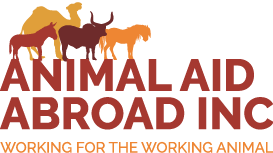Updates from Bridging Lanka
Bridging Lanka have sent us their Mannar Donkey welfare and management report for October:
"For five days Konnayankudiyiruppu village residents noticed a donkey with a serious ear injury but didn’t inform the donkey rescue service. Finally Nayeem reported this case as he could no longer bear to see the donkey continue to rub his ear against the abrasive surface of a house. Our staff responded to the distress call only to encounter a rotten, maggot-infected wound that stank to high heaven. Back at the donkey clinic the ear was cleaned and medical treatment provided. This month 26 treatments were administered using Negasunt, Betadine, Amoxicillin and Ketoprofen. The donkey’s ear is slowly recovering but will need additional time for a full recovery.
Santhipuram, a poor urban village in Mannar, was the first place we engaged with the community over donkeys back in 2012. The villagers have continued to show kindness to these amazing creatures. Each day Antony and his wife place a bucket of water for local donkeys to quench their thirst. Earlier this month Antony’s wife noticed one of the regular donkeys with an injured hoof. She rang us. Eventually our rescue team located the injured donkey grazing in a grassy area. With the mare was two foals - one more than two years and the other, two to three months of age. We decided to just take the mother and young foal. Already 27 sessions of treatment have occurred and the hoof is healing well.
We were informed of a white donkey in Periyakarisal. White donkeys are rare in these parts so our curiosity got the better of us. Where they said the donkey could be found had no roads so we had to go on foot through jungle for more than 5 kilometres. Still no luck. We returned to the centre only to get an update on the whereabouts of the white donkey. Our second attempt was successful. It was no mean feat to catch this donkey which behaved more like a horse! Seeing our beloved sponsored donkey, Aussie, had recently died, we decided to substitute this feisty beast for our sponsor, but still retain the name, Aussie.
Obviously the message is getting out amongst the donkey population that they can get medical help from the donkey clinic. Early one morning an injured donkey turns up at our gate and waits for us to arrive. We tried to put a lead rope around its neck but it galloped off. In the evening it returned. This time it was willing to be harnessed. One of its hoofs was encased in a tin can. After removal and some antiseptic rubbed on the small wound, we released the donkey into the nearby forest. Perhaps we won’t need our rescue vehicle in future or any advertising of our service!"







